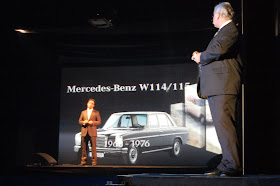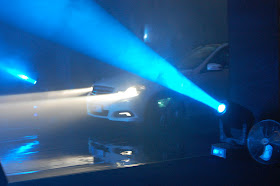
Giant automotive group Naza's (Nasim) Peugeot 308 Turbo got stamping approval of the New Straits Times/Maybank COTY panel by clinching the prestigious “Overall Car of the Year 2009” Award. Incidentally, the 308 Turbo was also the winner of the Family Car COTY 2009 Award.
The winners for the New Straits Times/Maybank 2009 Awards were announced at a gala dinner at The Saujana Kuala Lumpur, hosted by the New Straits Times and title sponsor Maybank Berhad.
A panel of 10 judges, comprising motoring editors, an automotive blogger and other distinguished personalities unanimously voted for the Peugeot 308 Turbo as winner of the coveted “Overall Car of The Year” based on its impressive handling, powerful performance, comfort, safety and value-for-money.
Judges were impressed by the car’s fuel efficiency, and the performance of the 1.6-litre direct injection turbo petrol engine, already an award winner internationally - but it was the 308 Turbo’s competitive price point and build quality that was the key factor in its win. The car also has a full-length panoramic glass roof, the only car in its class to offer such a feature.
The 308 Turbo is completely knocked down (CKD) and consists of imported parts from France. It is distributed by the official franchise holder of Peugeot Automobiles in Malaysia, Nasim Sdn Bhd (NSB), a member of the Naza Group of Companies.

The winner of the Good Design Award is the Toyota Prius. Already the number one selling hybrid car in the world, The Prius was selected not just for its beautifully sculpted shape, but also how much of its styling have been made to help its aerodynamic efficiency. Judges were also won over by the flowing lines of the car’s interior, the overall “cockpit” feel of the cabin, right down to the innovative use of storage space in the car.
The Volvo XC60, winner of the Luxury SUV award, added another feather to its cap by winning the Safety Award for its impressive list of safety features, which include the laser-based City Safety feature, Lane Departure Warning System and Collision Warning with Auto Brake, which uses radar technology for vehicle tracking.
The winners were selected from 68 new models introduced between December 2008 and October 2009, and judges took into account criteria such as exterior and interior design, comfort and ergonomics, performance, safety, emotional appeal, and after sales service including the comprehensiveness of its warranty. Points were awarded to the cars, and the vehicle with the most points wins the category. The overall Car of The Year winner was then selected from the list of 15 winners.
The night also saw history in the making when two distinguished names in motoring were selected as the “Automotive Men of The Year 2009” Award, Dato’ Dr Ang Bon Beng and Datuk Syed Abdull Hafiz Syed Abu Bakar.
Dato’ Dr Ang is the Executive Director of Edaran Tan Chong Motor, Nissan distributor and franchise holder in Malaysia. He was selected for his efforts in keeping the Tan Chong business thriving and making it the icon it is today, all this in spite of internal turmoil and pressure from its Japanese principal.
Datuk Syed Abdull Hafiz is the outgoing Managing Director of Perusahaan Otomobil Kedua Sdn Bhd (Perodua). He was recognised for presenting a product loved by Malaysians for its quality, reliability and styling, notably the Perodua Myvi.
The Car of the Year Awards is the country’s first motoring award, and was launched in 2002 by Cars, Bikes and Trucks, the motoring section of the New Sunday Times, as a means to acknowledge achievements within the motoring industry.
The guest-of-honour for the night was Tan Sri Muhyiddin Yassin, the Deputy Prime Minister. Also gracing the occassion was Datuk Aishah Ahmad, President of the Malaysian Automotive Association.
The event is endorsed by the Malaysian Automotive Association.












+Facelift.jpg)
+Facelift+Launch.jpg)




































